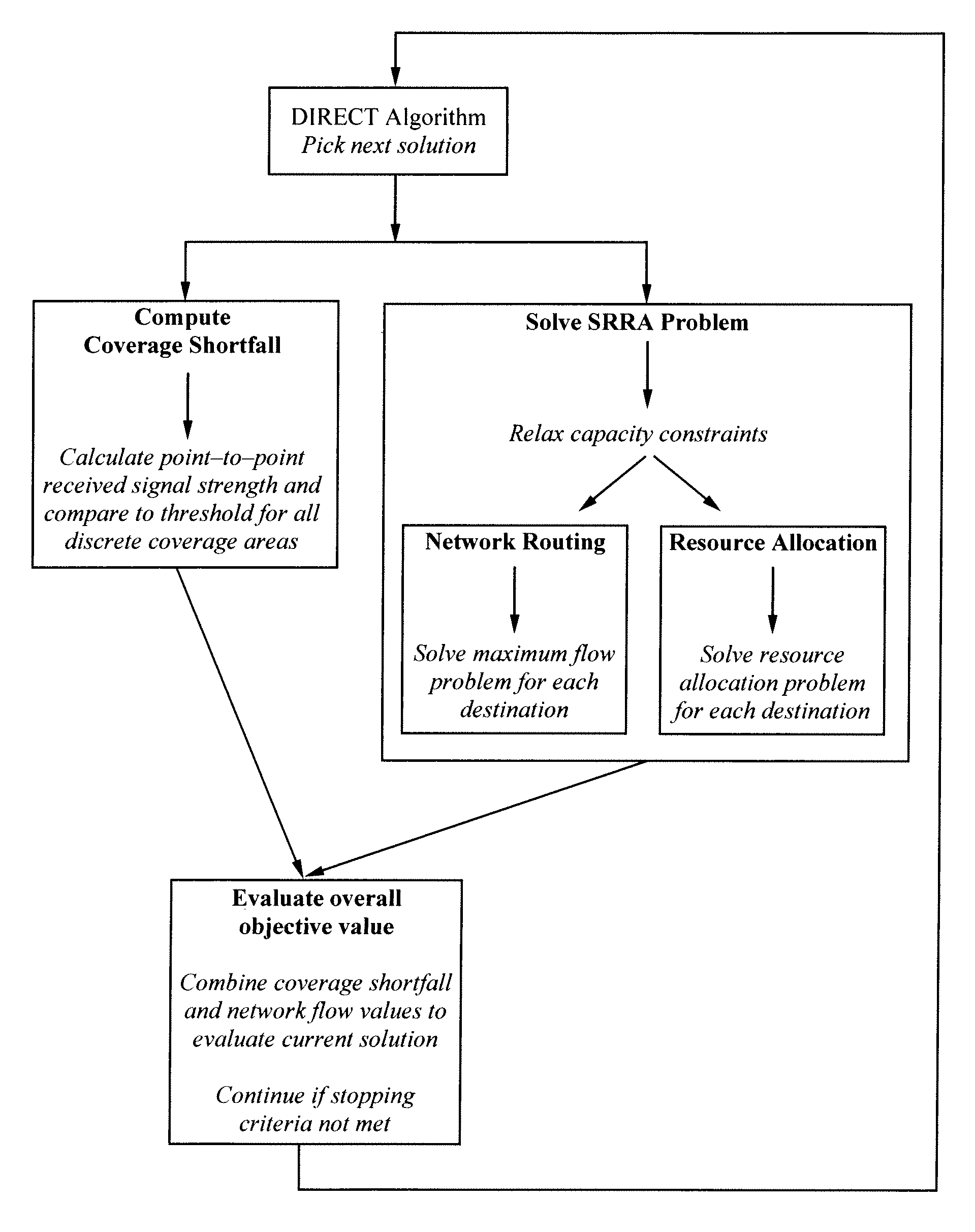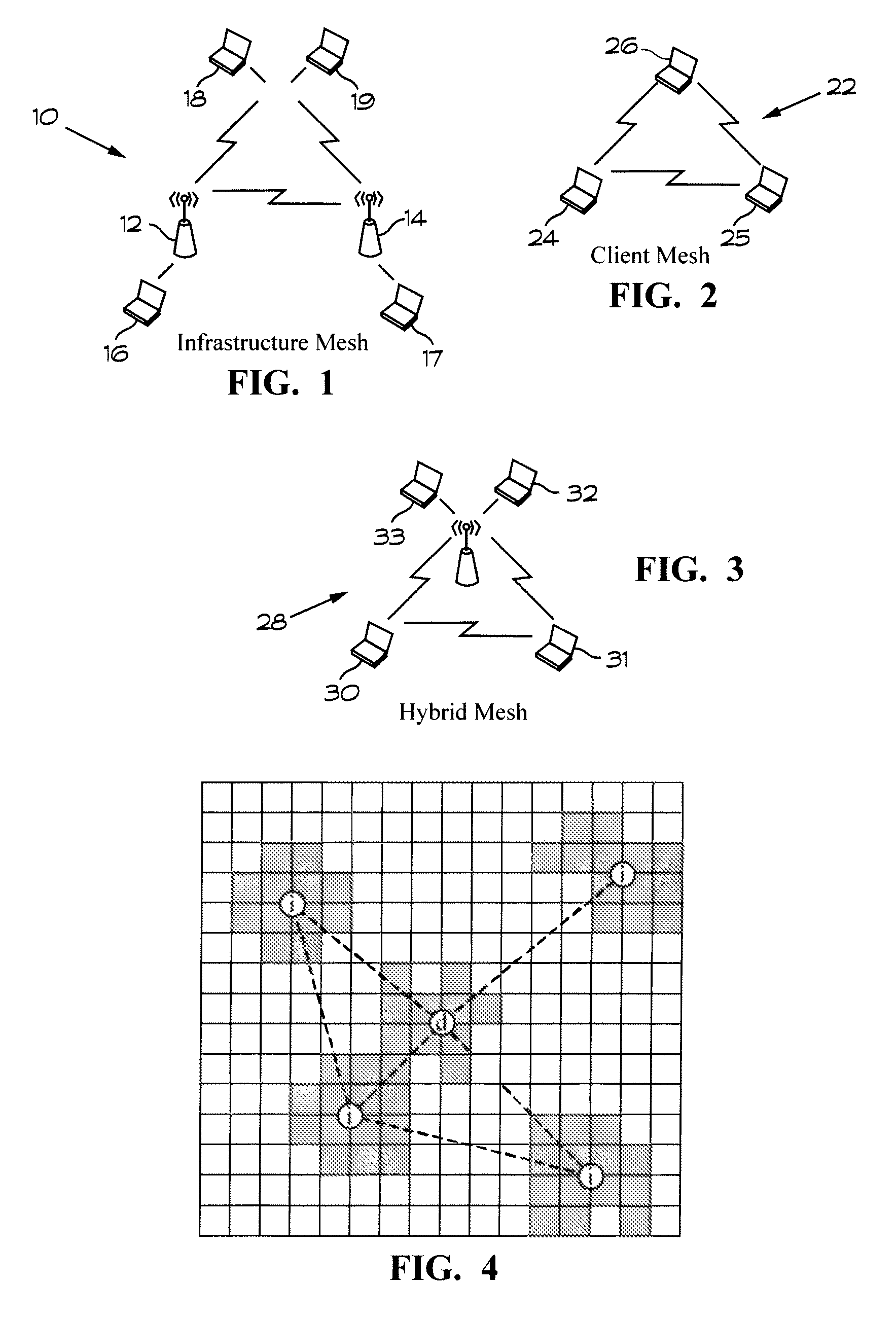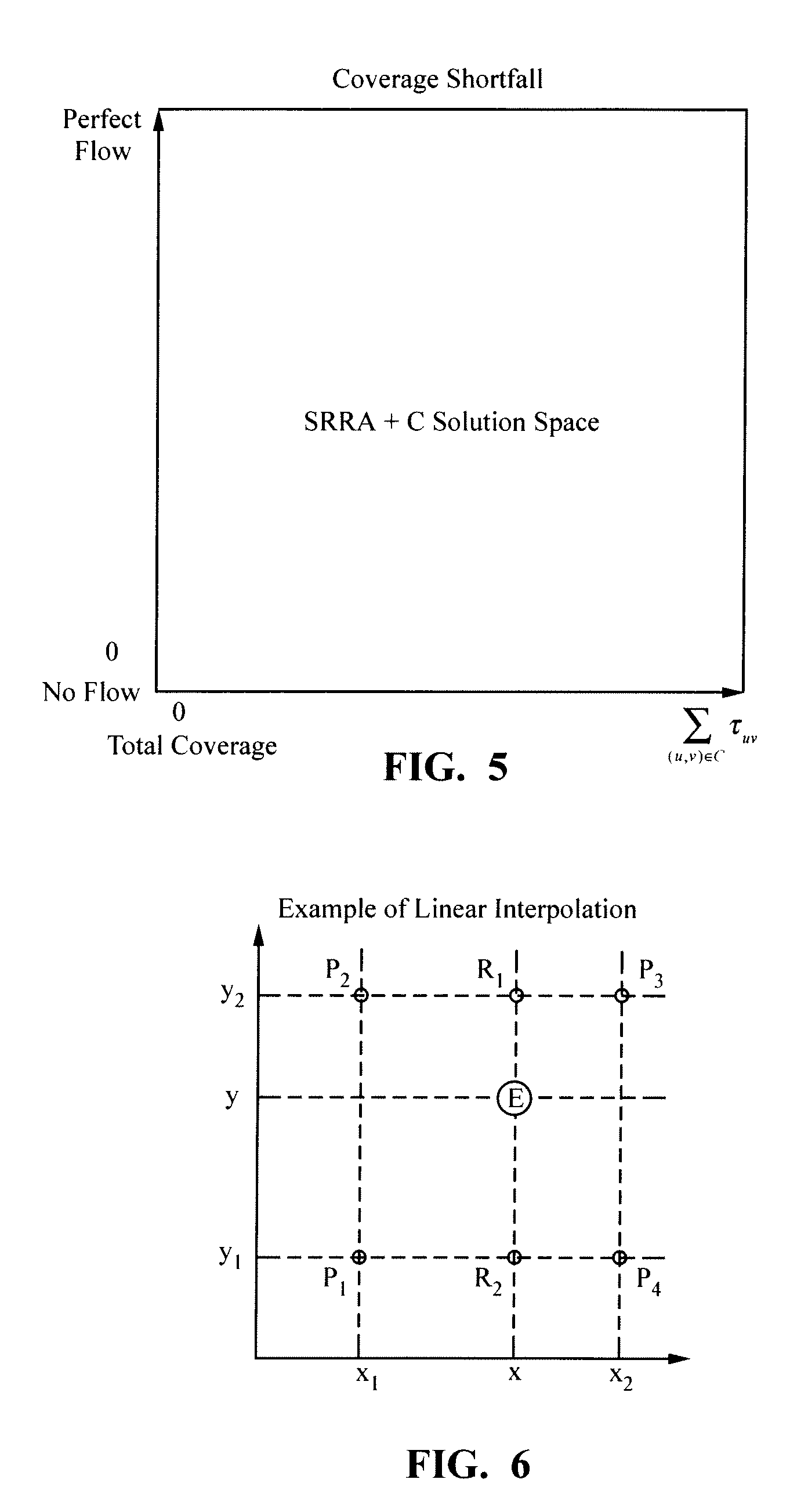Method for optimal transmitter placement in wireless mesh networks
a wireless mesh network and optimal design technology, applied in the field of communication systems, can solve the problems of core optimization problems, achieve the effect of quick and optimal design of wireless mesh network, quickly finding optimized solutions, and maximizing client coverage area
- Summary
- Abstract
- Description
- Claims
- Application Information
AI Technical Summary
Benefits of technology
Problems solved by technology
Method used
Image
Examples
Embodiment Construction
[0031]In accordance with one embodiment, the process of maximizing client coverage in a WMN is divided into two major subproblems. The first subproblem calculates client coverage using the Terrain Integrated Rough Earth Model (TIREM) (Alion Science and Technology Corporation, 2007), given AP locations, operating characteristics, and terrain and environment information. The second subproblem determines the optimal routing and power allocation scheme to quantify the value of network flow, solved using Simultaneous Routing and Resource Allocation (SRRA) techniques. After combining the SRRA and coverage subproblems via a penalty function, the overall formulation is referred to as SRRA+C. SRRA+C is a non-differentiable, non-convex, nonlinear optimization problem. A DIviding RECTangles (DIRECT) algorithm is used to iteratively sample the SRRA+C objective function in pursuit of an optimal solution. In one embodiment, the process is embodied as a decision support tool executed on a laptop c...
PUM
 Login to View More
Login to View More Abstract
Description
Claims
Application Information
 Login to View More
Login to View More - R&D
- Intellectual Property
- Life Sciences
- Materials
- Tech Scout
- Unparalleled Data Quality
- Higher Quality Content
- 60% Fewer Hallucinations
Browse by: Latest US Patents, China's latest patents, Technical Efficacy Thesaurus, Application Domain, Technology Topic, Popular Technical Reports.
© 2025 PatSnap. All rights reserved.Legal|Privacy policy|Modern Slavery Act Transparency Statement|Sitemap|About US| Contact US: help@patsnap.com



